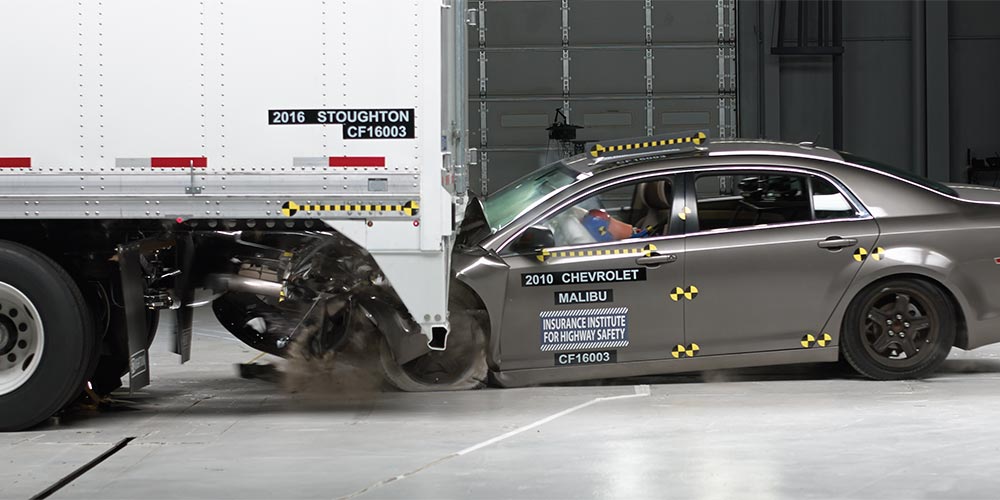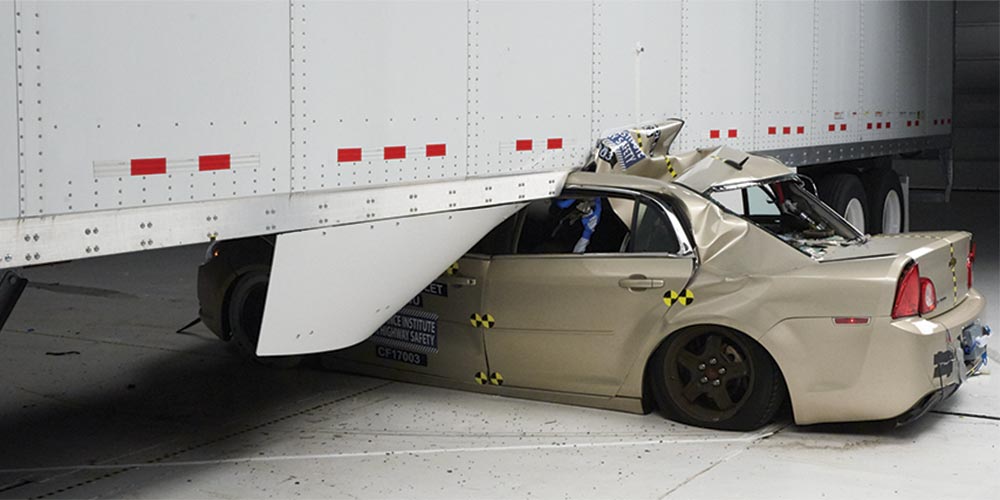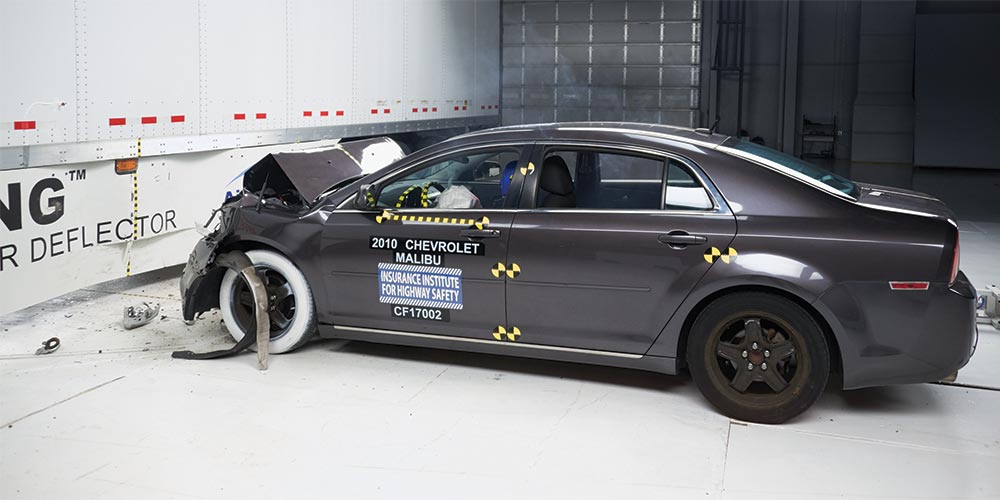In addition to antilock brakes, several other crash avoidance technologies have been developed for large trucks. To date, penetration of these technologies into the large truck fleet has been slow compared with passenger vehicles, but the technologies have the potential to substantially reduce large truck crashes.
Electronic stability control (ESC) has been required on all new truck tractors and buses since Aug. 1, 2019. ESC is designed to intervene when a truck's motion becomes unstable, possibly resulting in rollover, jackknife or other loss of control.
The high centers of gravity on large trucks increase the risk of rolling over, particularly on curved roadway segments, such as ramps. Nearly half of truck occupant deaths each year occur in crashes in which the vehicle rolls over.
Based on an analysis of crashes occurring during 2004-08, the Institute estimates that ESC has the potential to prevent or mitigate as many as 31,000 crashes involving large trucks each year, including up to 20% of moderate-to-serious-injury large truck crashes and 11% of fatal large truck crashes (Jermakian, 2012). NHTSA estimates that ESC on large truck tractors and large buses will prevent 40% to 56% of untripped rollovers and 14% of loss-of-control crashes (Wang, 2011).
The IIHS study also looked at the potential crash reductions with other crash avoidance features — blind spot detection, forward collision warning/mitigation and lane departure warning (Jermakian, 2012). The combination of those technologies and stability control could prevent or mitigate as many as 107,000 police-reported crashes each year, representing 28% of all crashes involving large trucks. As many as 12,000 nonfatal injury large truck crashes and 835 fatal large truck crashes each year could be prevented or mitigated, the study found.
Stability control technology has the greatest potential for preventing or mitigating large truck crashes involving nonfatal or fatal injuries, while blind spot detection has the greatest potential for preventing large truck crashes of any severity.
The actual crash reductions from these crash avoidance systems for large trucks are not yet fully understood, but recent research suggests they have promise. An IIHS study found consistently beneficial effects for stability control, speed governors and electronic devices for logging hours of service (Teoh et al., 2017). Use of other advanced crash avoidance systems were reported too infrequently for analysis.
A recent IIHS study (Teoh, 2021) estimated that forward collision warning and automatic emergency braking systems reduce the rate of front-to-rear crashes per mile traveled of large trucks weighing at least 33,000 pounds by 44% and 41%, respectively. A key benefit, beyond preventing crashes, is mitigating the crashes that do happen. Among front-to-rear crashes of trucks in which these technologies intervened (issued a warning or braked automatically), speed was reduced by about 50%, on average, between intervention and impact.
As part of the bipartisan infrastructure package passed in 2021, Congress ordered regulators to issue a rule requiring AEB on all trucks over 26,000 pounds. Congress also called for a study on whether other types of trucks should be equipped with AEB. In response, NHTSA and FMCSA issued a proposed rule that would require AEB in all new motor vehicles over 10,000 pounds (NHTSA, 2023). This proposal would also extend the ESC requirement to vehicles over 10,000 pounds that were not subject to an existing mandate (generally, those between 10,000 and 26,000 pounds).
While automatic emergency braking offers greater functionality, a benefit of forward collision warning is that some systems can be installed on existing trucks, allowing the benefits to be realized sooner and more broadly.



